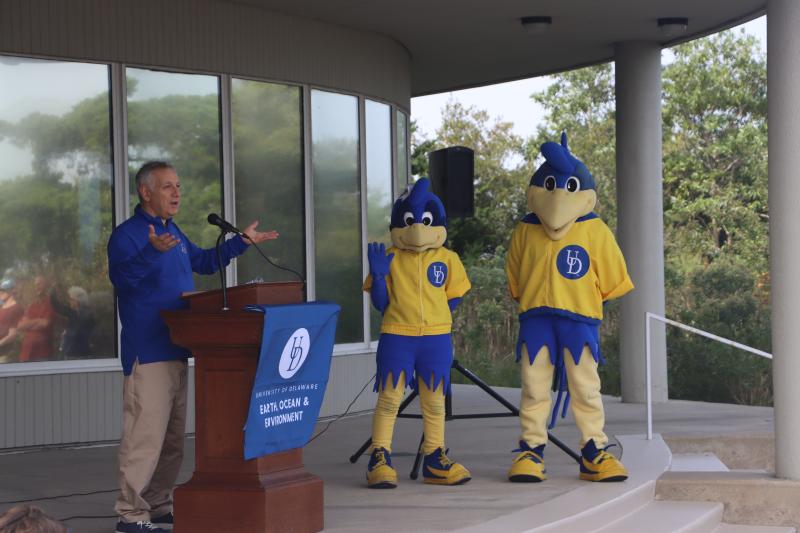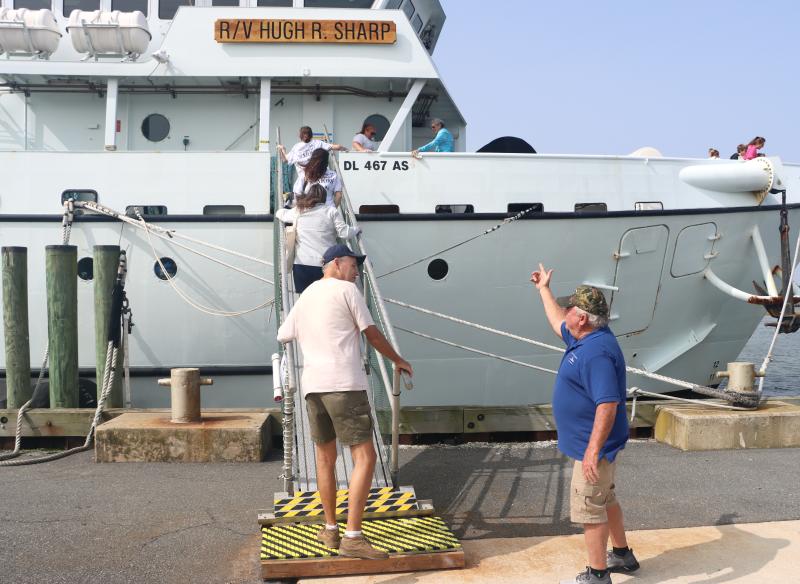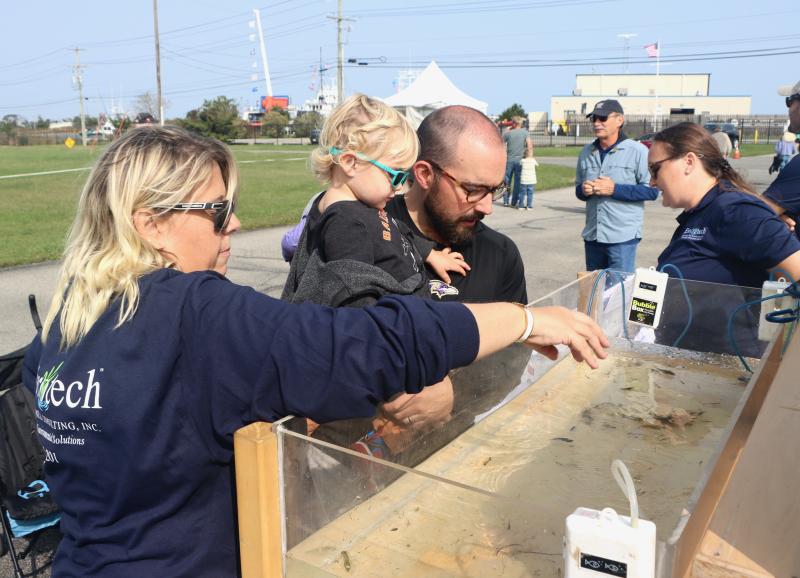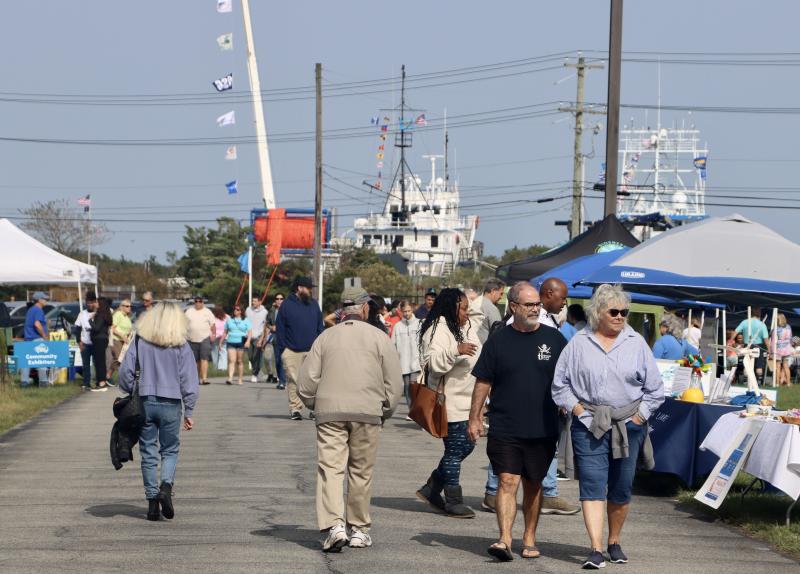Blue skies and plenty of Blue Hens were on hand for the University of Delaware’s Coast Day held Oct. 1 at the Hugh. R. Sharp Campus in Lewes.
It was the first Coast Day in four years, and organizers could not wait to show off the cutting-edge research being done around campus.
“In just the last four years, we have built a pilot-scale oyster hatchery; we put together the Climate Change Science and Policy Hub. We’ve worked with industry partners to develop an exciting program in marine robotics,” said Fabrice Veron, dean of the university’s College of Earth, Ocean and Environment.
The theme of this year’s Coast Day was Weathering the Storm. “We are building resiliency to the storms we face today, from the pandemic to climate change and many more,” Veron said.
“At the end of the day, we make our communities safer, healthier because of the work we do here,” said University of Delaware President Dennis Assanis.
Coast Day featured more than 100 exhibitors along with demonstrations, lectures, shark feeding and touch tanks, offering hands-on interaction with sea creatures.
Delaware alum Matt Nelson of Lewes, his wife Harley, and children Theodore and Evelyn stopped at the Envirotech booth to touch tiny tadpoles. “Evelyn said it felt like a flip-flop,” Nelson said. He said he hoped to learn more about the coast and even see those big ships he drives past every day.
Those ships were a popular attraction, especially the largest one, the R/V Hugh R. Sharp. “It’s a multipurpose research ship,” said Jon Swallow, UD director of maritime operations. “We are one of 18 vessels in the country in the Academic Research Fleet. We have state-of-the-art oceanographic equipment. But each science team will bring their own specifics to their project. We go out for 10 days to two weeks, but some missions are 30 days.”
Swallow said one of the most important annual missions involves scallops off the coast of Cape Cod. “We tow a camera and have researchers doing real-time data analysis, measuring sizes of scallops and assessing their health,” he said.
Visitors also got to go onboard the oil response ship DelRiver, which is always on call in case of a spill in the Delaware Bay, and other smaller vessels.
Over on the other side of campus, robotics stole the show. “We have remotely operated vehicles that are used just like a remote-control car or boat. They all have different sensors; some have cameras so we can see underwater,” said Chris Petrone, Delaware Sea Grant Marine Advisory Service director.
Yuleny Gomez, a graduate student at the Sharp Campus, showed off an underwater glider, a yellow drone that looks like a torpedo with wings. “We deployed this off the North Carolina coast in August. We retrieved it last week,” she said, showing a map of the route the glider took to weave its way through the currents back to Lewes.
“The glider measures temperature, salinity and how much photosynthesis is going on in the water by all organisms. It measures the track of what the water looks like underneath and helps us with hurricane research,” Gomez said.
In fact, Gomez said, the glider was out there during Tropical Storm Ophelia. “It will be good information to know about how the energy was moving through the water at that point,” she said.




Bill Shull has been covering Lewes for the Cape Gazette since 2023. He comes to the world of print journalism after 40 years in TV news. Bill has worked in his hometown of Philadelphia, as well as Atlanta and Washington, D.C. He came to Lewes in 2014 to help launch WRDE-TV. Bill served as WRDE’s news director for more than eight years, working in Lewes and Milton. He is a 1986 graduate of Penn State University. Bill is an avid aviation and wildlife photographer, and a big Penn State football, Eagles, Phillies and PGA Tour golf fan. Bill, his wife Jill and their rescue cat, Lucky, live in Rehoboth Beach.






























































